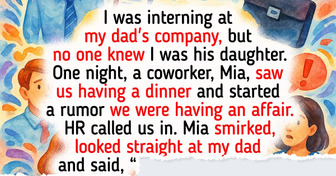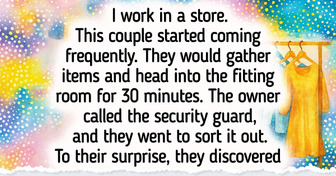My MIL Refused to Babysit and Secretly Put My Kid in Daycare—My Payback Tore Her Apart

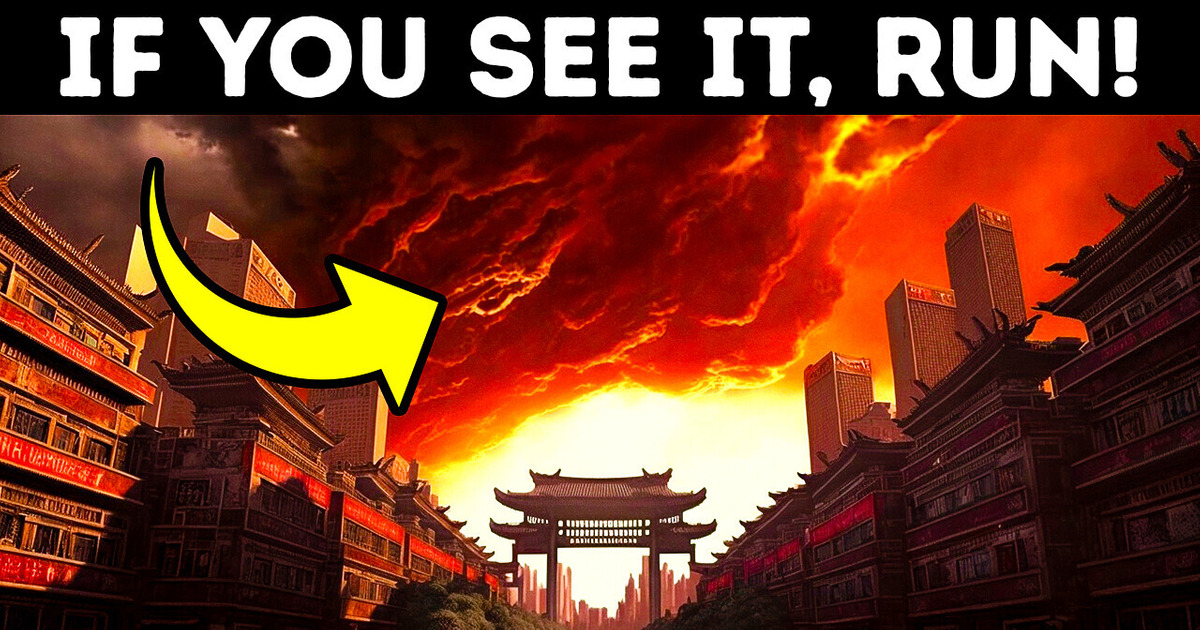
Hi there! I invite you to look at some of the coolest phenomena mother nature has. I’ll start with the red sky. I admit that this scenery is kinda scary, as if it’s a scene from a movie. How can our blue sky turn red? Zhoushan’s authorities assured people that this abnormality wasn’t related to solar activity. This tint appeared due to the refraction of red lights from fishing boats. That day, the weather was foggy and cloudy. The light got reflected from the low-hanging clouds. When weather conditions are right, aerosol particles and droplets of other liquids in the atmosphere refract and scatter the light. In this case, the light source was on fishing boats.

Since we started with reflections, we can continue with a forest in Japan that looks as if it’s come straight out of a fairy tale. It turns out there are real mushrooms that glow in the dark! They are known as forest fairies, but their official name is The Mycena lux-Coeli [pronunciation: ma-si-na-lux-che-li]. They’re bioluminescent fungi. It means that they glow. These mystical-looking mushrooms are scattered all over old trees and soft ground. You can see them in several different forests in Japan. They’ve been attracting tourists for many years since they were first discovered in the 1950s. It makes me feel like I’m looking at a picture from a secret neon-themed party in the woods.
Moving on from one mesmerizing forest to another. This one is underwater. There are lakes, and there are forests. Kaindy Lake in Kazakhstan offers you one inside the other. The lake is almost 100 feet deep. It has a beautiful turquoise-lime color, and the submerged trees are seen below the surface. An earthquake in 1911 is the reason why this sunken forest formed. The quake created a huge limestone landslide that formed a natural dam. Rain and water filled the dam. The water covers the tree roots entirely. Yet, their top parts remain above the surface. This gives the lake a spooky vibe, especially if the weather is foggy. What does it look like under the water? Don’t hurry to put on a scuba diving suit.

No need to dive in because you can see the lake’s depths from the shore, too. The water is super clear. There aren’t many rotten tree trunks. In fact, the trees have miraculously resisted decomposition. You can even see the needles on their branches. You can thank the lake’s consistent temperature for that. No matter the season, the temperature rarely goes higher than 43 degrees Fahrenheit. In the winter, the lake gets frozen, and people go fishing and ice diving. You can still enjoy the view through the crystal-clear ice layer.
The next dream destination is Bolivia. Imagine standing on a 4,000-square-mile mirror. You can do that in Salar de Uyuni. It’s the world’s largest natural mirror since it’s a reflective salt flat. The surface is so flat as a result of thousands of years of transformations that happened to several prehistoric lakes. There are other lakes close by, and when they flow into this one, the flat surface turns into a... well, I’ll say lake, but it’s around 20 inches deep. Yes, the water layer is super shallow, but that’s enough to transform the area into a giant mirror. For most animals, this area is non-habitable because of harsh living conditions. Yet, flamingos visit this lake’s chain of pristine lagoons to feed and breed. Three out of the world’s 6 species of flamingo come here. As you can guess, this is the perfect spot for photographers and tourists. They take cool pics of flamingos standing on the giant mirror lake.
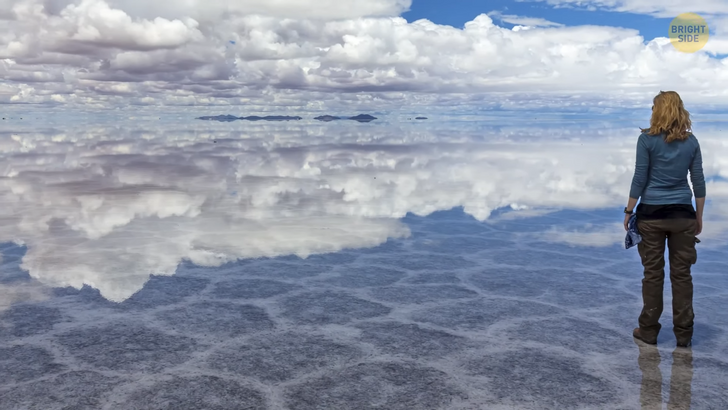
Would you like to see the “sea of stars”? Then you should visit the shores of Vaadhoo in the Maldives. Vaadhoo is a small island that’ll surprise you at night time. Do you remember the glowing forest in Japan? Here we have glowing blue waves. The waves shine thanks to a natural chemical reaction called bioluminescence. Phytoplankton is the type of plankton that’s responsible for the blue glow. It looks like the water shimmers when waves hit the shore.
The next stop is in the Southwestern US. This is “the Wave” in Arizona. It’s a unique sandstone formation. The sediment has a rippling form and interesting colors. It’s made of intersecting U-shaped troughs that have been eroded over time. The Wave was formed millions of years ago. This one-of-a-kind formation is popular among hikers and photographers. Yet, it’s not easy to visit this place. The formation has a fragile nature, so only around 60 people can visit it in one day. These people should apply for a permit and join the daily lottery system.

Do these look like regular trees? Nope, the entire forest is technically one tree. This phenomenon is called Clonal Groves. All these trees are connected underground by a single root network. That’s why trees look like they’re copied and pasted with the help of Photoshop. Each trunk is genetically identical to the others. We are now looking at the most famous example of clonal groves, which is “Pando” from Utah. It’s one of the largest and oldest organisms on our planet! Pando has 47,000 stems, and it originated from a single seed. It spread by creating new shoots from the expanding root network.
Another mesmerizing phenomenon is this Indonesian volcano that has blue flames. It looks like the lava itself is blue when you first see it. In reality, the lava turns blue due to sulfur. When sulfuric gas meets with oxygen at an ultra-high temperature, it burns. Bright blue flames appear, and then lava flows through the mountain. This feature is visible at night. During the day, the lava looks like a regular orange liquid.
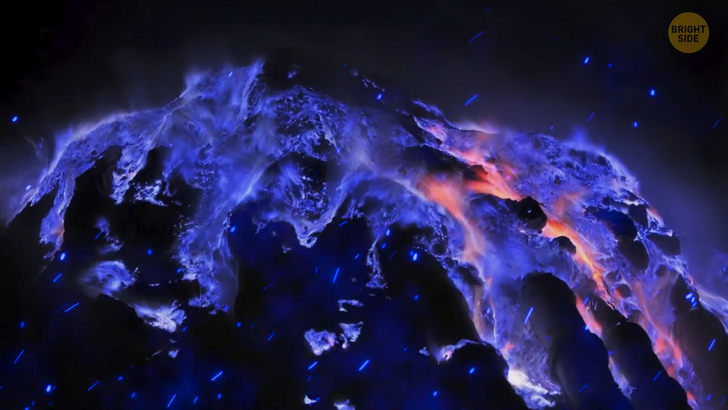
Ice can come in different shapes and forms. Here is a less-known one; the jewel ice. This type of ice can only be seen in Japan’s Tokachi River. The river has crystal clear water in general. When the temperatures drop and the river freezes, ice chunks move with the waves to the riverside. These giant diamond-like ice pieces are transparent. That’s why they reflect light differently. If you visit the lake at sunset, you will see golden yellow ice stones, but at any other time of the day, they look blue. It depends on how light scatters in the sky.
Another beauty comes with a winter breeze. If you step onto the frozen Abraham Lake in Canada, you will see ice bubbles under a layer of ice. It might look like they are out of this world, but this beauty isn’t so innocent. These ice bubbles are made of methane. Since this gas is flammable, these white orbs aren’t perfectly safe. Why are there frozen methane bubbles in this lake? Well, it’s due to the natural process of decomposition. Plants and parts of trees deep down at the lake’s bottom decay. When this occurs, plants release methane, creating air bubbles. In the meantime, the temperature decreases. Ice bubbles cannot reach the surface and get trapped in the ice — it looks kinda like a lava lamp. Even though it’s winter and snow might fall, super strong winds wipe away everything from the lake’s surface so we can appreciate this potentially dangerous beauty.

How about seeing some flaming rocks? Yanartas is located on an inactive volcano mountain in southwestern Turkey. The name of this rock formation is related to its appearance. It literally means “flaming rock.” The rocks have been flaming for at least 2,500 years! So they’re full of tiny “fumaroles” that release gases, such as methane. The gas ignites when it comes into contact with oxygen and creates “eternal” flames. Yanartas isn’t the only special rock that produces eternal flames. There’s a small waterfall in western New York that creates these types of flames too. The same principle applies to the Eternal Flame Falls. The grotto at the waterfall’s base emits natural gas. Gas is the reason why flames form. Oh man, I want to see all these wonders with my own eyes. I just wish I could teleport!









